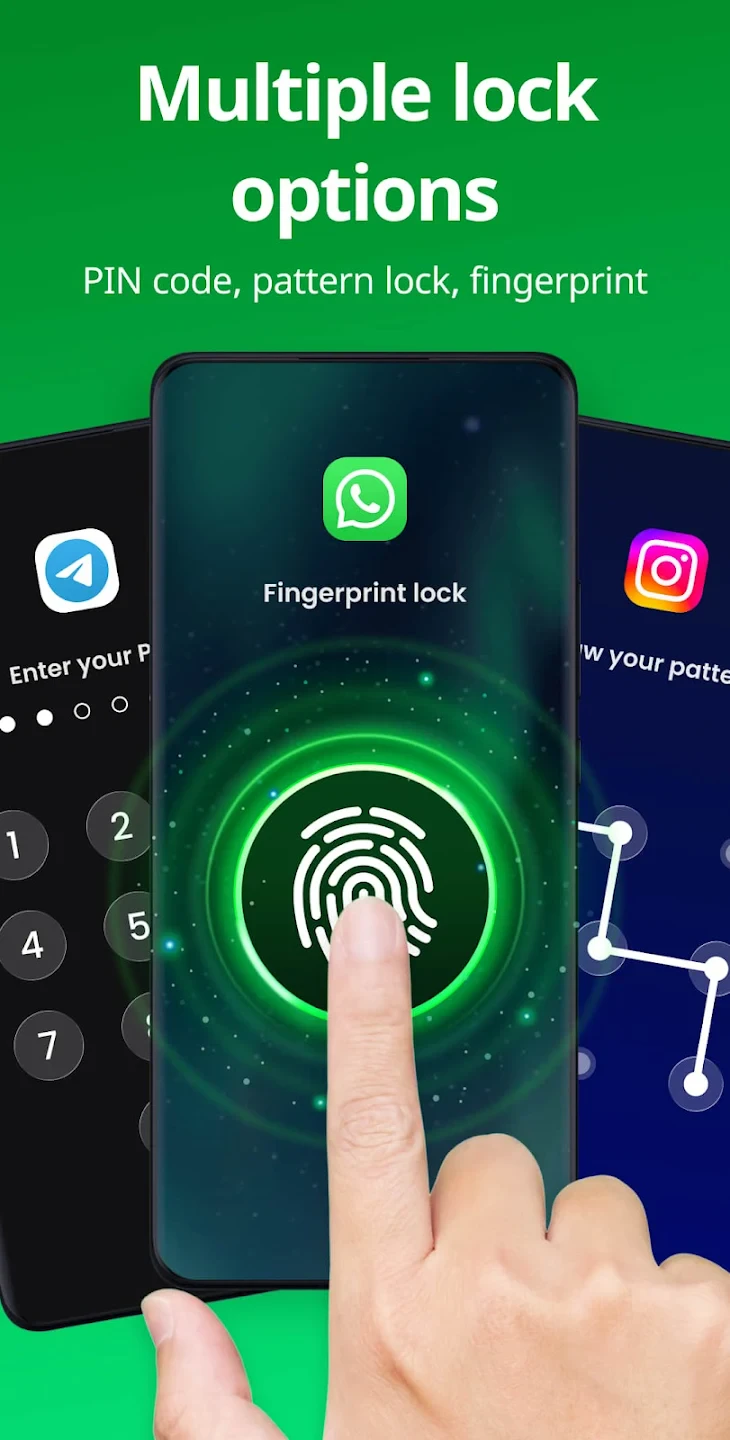Physical Address
304 North Cardinal St.
Dorchester Center, MA 02124
Physical Address
304 North Cardinal St.
Dorchester Center, MA 02124
 |
|
| Rating: 4.7 | Downloads: 50,000,000+ |
| Category: Productivity | Offer by: Trusted Tools |
App Lock – Applock Fingerprint is a security application designed for Android devices, offering multiple methods to lock individual apps and folders. Its core function is to restrict access to sensitive applications or content, ensuring privacy and preventing accidental or unauthorized use, primarily by leveraging biometric authentication like the device’s fingerprint scanner.
The key value of App Lock – Applock Fingerprint lies in its ability to protect personal information and digital content effectively. Users can quickly secure specific apps or groups of apps, providing peace of mind when the phone is left unattended or shared, making it an essential tool for enhancing digital privacy in daily life.
| App Name | Highlights |
|---|---|
| Screen Guard |
Known for its robust scheduling features and ability to hide sensitive content beyond simple locking, often integrating screenshot protection and app hiding capabilities. A comprehensive privacy suite. |
| Folder Lock |
Focused primarily on securing entire folders and files system-wide with strong password protection options. Ideal for those needing broad-based file and folder security across the device. |
Q: Does App Lock – Applock Fingerprint work with all Android devices, and do I need a specific type of phone?
A: Generally, the fingerprint unlocking feature requires an Android device equipped with a fingerprint reader and sensor, typically found on most modern smartphones released around 2015 or later. For PIN or pattern locking options, almost any capable Android smartphone can utilize this App Lock – Applock Fingerprint app, as these methods rely on standard Android functionalities.
Q: Can I lock different apps using different security methods with App Lock – Applock Fingerprint, or is everything locked the same way?
A: Yes, that is one of the key advantages of the app. App Lock – Applock Fingerprint offers significant flexibility, allowing users to set different unlock methods (like PIN for finance apps, fingerprint for quick access to gallery, or pattern for frequently used games) for each individual application or group of apps. This customization tailors the security and convenience to specific needs.
Q: What happens if I lock an app or folder with the app and I forget my PIN or pattern? Can I unlock it?
A: Most versions of App Lock – Applock Fingerprint will include options for forgotten PIN or pattern lockouts, often through the app’s own recovery mechanisms or sometimes requiring temporary contact with customer support. Some free versions might limit these recovery options or offer fewer alternatives for unlocking a forgotten secured app compared to paid versions.
Q: Is using App Lock – Applock Fingerprint secure against hacking or data breaches? Could my fingerprint data be compromised?
A: Reputable apps like App Lock – Applock Fingerprint generally handle fingerprint data securely, often storing the template locally on the device and not transmitting raw biometric data to external servers. However, no app is entirely immune to vulnerabilities. Always download from official sources like the Google Play Store and ensure the developer has a good security track record. Biometric data security depends on the device and app implementation, not just the app itself.
Q: Does the use of App Lock – Applock Fingerprint impact my device’s battery life or overall performance?
A: Modern apps, including App Lock – Applock Fingerprint, are generally designed efficiently. The core locking mechanism shouldn’t cause significant battery drain. However, if you frequently use the app’s companion web service or desktop application for remote management, or if the app is constantly active monitoring for specific triggers (though typically not the case), there could be minor, usually negligible, impacts. Performance overhead is typically very low.
 |
 |
 |
 |